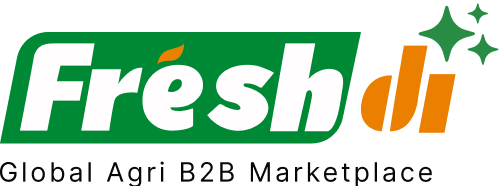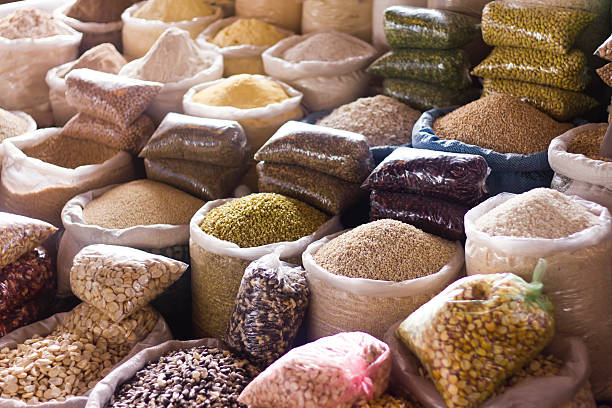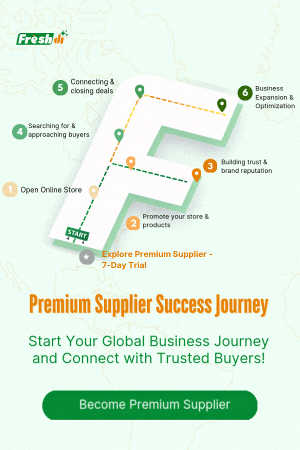Introduction – Current State of Play: The Food Sector in Vietnam
Vietnam’s food sector is buzzing with activity in mid-2025, and if you’re in the game — whether you’re sourcing, importing, or distributing — you better buckle up. Recent trade pacts, climate disruptions, and booming demand from both domestic and global buyers are sending shockwaves through Vietnam’s food supply chains.
In July 2025, the Vietnamese government finalized a new bilateral trade agreement with the European Union, cutting tariffs on key agricultural exports like rice, pepper, and seafood. This move is opening the floodgates for Vietnamese food suppliers to access new consumers across the continent. Meanwhile, erratic weather patterns — including an unusually dry spring in the Mekong Delta — have impacted yields in some regions, while others are thriving due to improved irrigation tech and smart farming.
For businesses, it’s a time of both opportunity and caution. The dynamics are shifting fast. The only way to stay competitive? Keep your finger on the pulse of what’s happening right now — and know which suppliers are truly delivering under pressure.
Deep Dive – What’s Making Headlines? Key Recent News & Impacts
So, what’s making noise in the Vietnamese food sector?
First off, let’s talk growth. Vietnam’s food and beverage exports have surged by 12% year-on-year in the first half of 2025, fueled by strong demand for health-oriented products like organic rice, seaweed, plant-based snacks, and ready-to-eat meals.
But it’s not all smooth sailing. The global shipping slowdown in Q2 due to geopolitical tensions in the South China Sea briefly disrupted exports. Fortunately, Vietnam’s major ports have since ramped up capacity and customs digitization, helping smooth out bottlenecks.
Investments are flowing in too. Several international food brands have announced joint ventures with Vietnamese manufacturers to produce locally for the ASEAN market. Meanwhile, Vietnamese suppliers are adopting next-gen tech like blockchain for traceability and AI for demand forecasting.
Platforms like Freshdi are playing a critical role here — enabling real-time visibility into RFQ trends, supplier certifications, and market shifts. Want to know who just secured a big EU contract or which supplier has the most buyer reviews this month? Freshdi has it.
Top 3 Verified Food Suppliers in Vietnam – Navigating Current Market Realities
Here are the top 3 food suppliers in Vietnam in July 2025, verified for performance, certifications, and buyer satisfaction on platforms like Freshdi:
1. EcoStraws Vietnam
- Specialty: Gluten-free rice stick noodles, vegan food.
- Why They Stand Out: EcoStraws Vietnam has seen a 35% spike in export volumes this quarter. Their products cater to trending health-conscious consumers and meet global standards for vegan and allergen-free labeling.
- Certifications: ISO 22000, HACCP.
- Freshdi Insights: Rated highly for consistent quality and eco-friendly packaging. Frequently featured in RFQs from EU buyers.
2. VIET PEPPER JSC
- Specialty: Premium black pepper and spice blends.
- Why They Stand Out: Vietnam is the world’s largest exporter of pepper, and Viet Pepper JSC leads the pack with its traceable, pesticide-free products. They recently signed major contracts with buyers in Germany and the UAE.
- Certifications: GMP, Global GAP, FSSC 22000.
- Freshdi Insights: Recognized for sustainability and supply reliability. A top supplier in the “Spices & Condiments” category.
3. ANH KIM FOOD PRODUCTION JOINT STOCK COMPANY
- Specialty: Ready-to-eat porridge, baby food, MREs.
- Why They Stand Out: ANH KIM is capitalizing on the global demand for convenient, nutritious meals. Their seabass taro porridge is a hit in Japan and Singapore.
- Certifications: ISO, HACCP, BRC, VIETGAP.
- Freshdi Insights: Strong logistics network and scalable production. Named “Supplier of the Month” in June for rapid fulfillment during the rice shortage.
Dynamic Ranking Note:
The top suppliers on platforms like Freshdi may change month-to-month based on real-time metrics such as order fulfillment rates, buyer feedback, and RFQ volume. Keep an eye on Freshdi’s “Supplier of the Month” feature to stay updated.
Market Navigation – Strategic Responses to The Current Food Landscape in Vietnam
Navigating Vietnam’s food market in July 2025 is like surfing — you need to ride the wave, not fight it.
Opportunities:
- Organic & Functional Foods: With growing demand for clean-label and functional products, suppliers offering items like sea grapes, black rice, and probiotic-rich porridge are gaining traction fast.
- Private Label & OEM: International brands are increasingly sourcing private-label products from Vietnam due to cost competitiveness and improved quality control.
- Regional Clustering: Areas like the Mekong Delta and Central Highlands are hotspots for rice and spice production. Knowing regional strengths can sharpen sourcing decisions.
Risks:
- Climate Variability: Some regions are facing lower yields due to drought. Diversifying suppliers or selecting those with resilient farming practices is key.
- Logistics Disruptions: While easing, port congestion and shipping delays can still affect delivery timelines. Suppliers with robust export logistics are a safer bet.
Tactical Moves for Buyers:
- Verify Certifications: Use platforms like Freshdi to cross-check certifications (e.g., BRC, HACCP, Global GAP).
- Monitor RFQ Trends: Keep an eye on what products are being requested frequently. Surge in seaweed RFQs? That’s a signal.
- Engage in Contract Farming: Some buyers are locking in supply by co-investing in sustainable farms in Vietnam, ensuring steady access and traceability.
Conclusion – Key Takeaways for Businesses in a Fast-Moving Market
The food market in Vietnam is vibrant, fast-evolving, and full of both promise and pitfalls. Key developments like trade deals, climate shifts, and tech adoption are reshaping the landscape.
If you’re sourcing food from Vietnam in 2025, here’s what you need to remember:
- Stay Nimble: The market changes fast — so should your sourcing decisions.
- Focus on Verified Suppliers: Certifications and consistency matter more than ever.
- Leverage Intelligence Platforms: Tools like Freshdi offer real-time insights, RFQ data, supplier verification, and buyer reviews — all in one place.
By staying informed and proactive, you can turn this dynamic market into a competitive edge.
Checklist for Buyers: Vietnam Food Sourcing 2025
- ✅ Verify supplier certifications (HACCP, ISO, BRC)
- ✅ Check recent RFQ trends on Freshdi
- ✅ Prioritize suppliers with export-ready logistics
- ✅ Source from climate-resilient regions
- ✅ Lock in supply with contract farming or long-term deals
Future Outlook
As we move through 2025 and into 2026, Vietnam’s food sector is likely to:
- Expand exports to Europe and Middle East due to new trade deals
- See innovation in sustainable packaging and traceability tech
- Continue growth in health-focused, ready-to-eat, and specialty food segments
Platforms like Freshdi will be critical in tracking these shifts, offering buyers up-to-date intelligence and supplier discovery tools that give them an edge in this fast-changing market.
FAQs
1. What food products is Vietnam best known for exporting in 2025?
Vietnam is a major exporter of rice, pepper, seafood, ready-to-eat meals, and plant-based products like seaweed and black beans.
2. How can I verify if a Vietnamese food supplier is certified?
Use B2B platforms like Freshdi to view each supplier’s certification details such as HACCP, ISO, BRC, and Global GAP.
3. What’s driving the growth in Vietnam’s food exports this year?
New trade deals, rising demand for health-conscious foods, and improved export infrastructure are key drivers.
4. Are there risks associated with sourcing food from Vietnam right now?
Yes — climate variability and logistics delays are notable risks. Choosing reliable suppliers with good logistics networks can mitigate these.
5. How often do supplier rankings change on Freshdi?
Supplier rankings on Freshdi are dynamic and may update monthly based on buyer reviews, order volumes, and fulfillment performance.
References
Placeholder for source links — government trade updates, Freshdi data, news outlets, industry reports.


